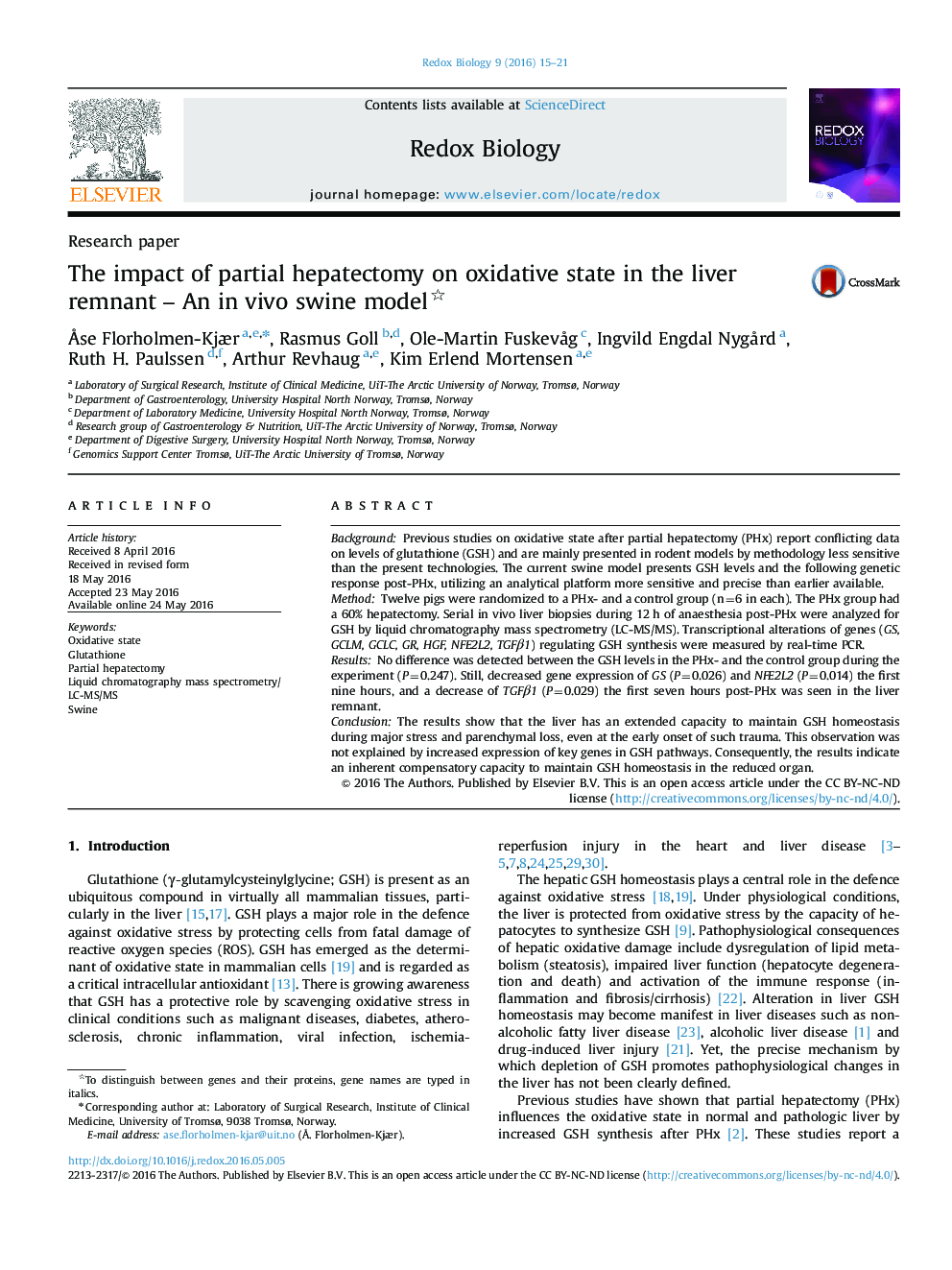| کد مقاله | کد نشریه | سال انتشار | مقاله انگلیسی | نسخه تمام متن |
|---|---|---|---|---|
| 1922802 | 1535841 | 2016 | 7 صفحه PDF | دانلود رایگان |

• The levels of Glutathione are maintained after a 60% hepatectomy in a swine study.
• Oxidative state is analyzed after partial hepatectomy using mass spectrometry.
• Glutathione is analyzed after partial hepatectomy using mass spectrometry.
• The liver has extended capacity to remain GSH homeostasis after partial hepatectomy.
• Glutathione in liver tissue is analyzed after partial hepatectomy in a swine model.
BackgroundPrevious studies on oxidative state after partial hepatectomy (PHx) report conflicting data on levels of glutathione (GSH) and are mainly presented in rodent models by methodology less sensitive than the present technologies. The current swine model presents GSH levels and the following genetic response post-PHx, utilizing an analytical platform more sensitive and precise than earlier available.MethodTwelve pigs were randomized to a PHx- and a control group (n=6 in each). The PHx group had a 60% hepatectomy. Serial in vivo liver biopsies during 12 h of anaesthesia post-PHx were analyzed for GSH by liquid chromatography mass spectrometry (LC-MS/MS). Transcriptional alterations of genes (GS, GCLM, GCLC, GR, HGF, NFE2L2, TGFβ1) regulating GSH synthesis were measured by real-time PCR.ResultsNo difference was detected between the GSH levels in the PHx- and the control group during the experiment (P=0.247). Still, decreased gene expression of GS (P=0.026) and NFE2L2 (P=0.014) the first nine hours, and a decrease of TGFβ1 (P=0.029) the first seven hours post-PHx was seen in the liver remnant.ConclusionThe results show that the liver has an extended capacity to maintain GSH homeostasis during major stress and parenchymal loss, even at the early onset of such trauma. This observation was not explained by increased expression of key genes in GSH pathways. Consequently, the results indicate an inherent compensatory capacity to maintain GSH homeostasis in the reduced organ.
Figure optionsDownload as PowerPoint slide
Journal: Redox Biology - Volume 9, October 2016, Pages 15–21